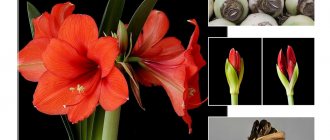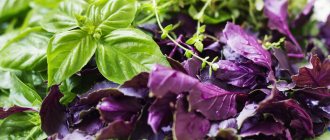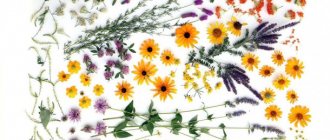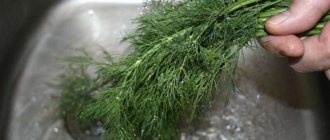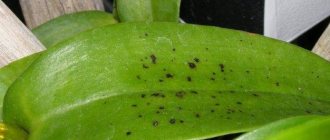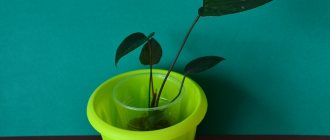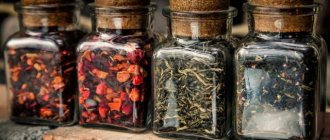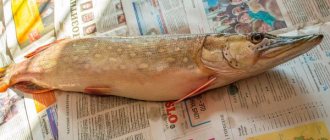Anthurium is a tropical plant with a flower in the form of an elongated cob with a bright glossy cover.
It can have different shapes and different colors. Dear readers! For you, we have created communities on social networks in which useful articles and interesting ideas are published several times a day! Subscribe and receive useful content in a convenient format!
Different types of anthuriums can be either epiphytes (growing on tree bark) or semi-epiphytes (growing next to trees in fallen bark, leaves and branches covering the soil).
There are up to several hundred species of anthurium around the world, but only three species are popular among gardeners: Anthurium Andre, Anthurium Crystal and Anthurium Scherzer.
Anthurium is popularly called “Male Happiness”. According to one version, it is named so because the plant in appearance resembles a hot, flaming heart-veil, pierced by an arrow-cob.
How often to water the “Male Happiness” flower?
Due to its tropical origin, anthurium does not tolerate drought , but if you overdo it with watering, the roots will simply begin to rot.
In addition, overwatering leads to the spread of mold. When watering a plant, you need to rely on observations of the flower. If the soil feels dry when you feel it, then it’s time to water the flower.
The temperature in the room is also of great importance. If it is high, then you need to water more often. If the air is cooler, then watering should be reduced accordingly.
Also, a lot depends on the age of the anthurium. A young flower requires more moisture than an older specimen. Like many tropical flowers, the frequency of watering depends on the time of year.
How to care for anthurium: creating an ideal climate
Caring for an anthurium flower is accompanied by certain difficulties. Of course, you can visit the forum and find out what kind of care such a flower requires, but we will try to cover the topic below. Problems with growing are due to the fact that anthurium is a tropical plant: creating suitable conditions at home for a capricious “pet” is not so easy. But nothing is impossible if you know the five subtleties of care.
- Lighting. The plant loves light; it does not grow well in the shade. But not everything is so simple: under direct sunlight, the flower may wither. Create diffused light, and “male happiness” will delight you with flowering all year round. From the end of autumn, the anthurium needs to be illuminated and it will reward you with luxurious flowers.
- Humidity. The tropical forests where the “flamingo flower” comes from are humid. To make the plant feel at home, you need to create a special microclimate. The ideal humidity for the plant is 80%. A humidifier will help create the desired microclimate. Don’t forget to regularly wipe the leaves (but not the inflorescences!) with a damp cloth, spray the plant, and place a container of water next to it.
- Temperature. The plant can adapt to temperature conditions. However, this is a heat-loving flower. The ideal temperature in the warm season is 20-28°C. In the autumn-winter period, the flower will be comfortable at 17°C. True, at this temperature it is not always possible to achieve flowering. The enemies of the plant are hot radiators, drafts, and sudden temperature changes.
- Watering. In this regard, the plant is demanding. Watering should be plentiful, but beware of overwatering. You need to look for a “golden mean”, because it is equally harmful to overdry the earthen lump and to saturate it too much with water. Check the pan after watering: drain the leaked water. In summer, watering becomes more frequent: approach the flowerpot with a watering can two or three times a week. In the cold season, it is enough to water the plant once every seven days. Always be guided by the soil: the top layer has dried out - it’s time to water the anthurium. The ideal option is melt water. But you can also water it simply with settled water, the main thing is not icy or hard.
- Feeding. In the spring and summer, the “flamingo flower” needs to be fed. It is worth doing this regularly, every two weeks. It is most convenient to use purchased mineral fertilizers for aroids and orchids. Remember useful advice from the owners of “male happiness”: the dose indicated in the instructions should be halved.
Caring for anthurium after transplantation is no different from usual. However, in the first two weeks you need to reduce watering to prevent the roots from rotting. But you should spray according to the usual pattern and regularly
Be careful with feeding: you can feed the plant two months after transplantation.
Watering methods
Most often, gardeners prefer bottom watering, that is, in a tray. This is not the best way for anthurium. Anthurium has aerial roots on the lower part of the stem. They also need to get moisture. Therefore, it is recommended to cover the base of the plant with sphagnum moss.
It retains moisture and thus nourishes these same roots. You can also use mixed irrigation, that is, water the soil directly and add water to the pan.
Important! When watering a plant from above, do not pour water on the leaves, and especially the flowers. This can lead to a deterioration in the appearance of the flower. Droplets of water dry out and leave unsightly marks.
Anthurium is very good at spraying from a spray bottle, while experts advise moistening not the flower itself, but the air around it, especially in winter.
Well, the last way to moisturize is to place a container with a flower on a tray filled with expanded clay and water. Evaporating water moisturizes both the soil and the flower as a whole.
Remember! It is very useful to periodically arrange a “bath day” for anthurium.
You can wipe the leaves and flowers with a damp cloth, but be sure to dry all surfaces afterwards. Otherwise, water stains will remain on the flower. Or, the anthurium “bathes” in the shower. This way you can wash off all the dust from it. After this, the procedure for drying the surfaces of the leaves.
Description
Anthurium belongs to the herbaceous plants of the Araceae family. The name is formed from two words of the ancient Greek language: tail and flower.
Because of its unusual appearance, unlike anything else, it is popularly called differently - the “male happiness” flower. It is believed that anthurium can improve the physical health of men.
The plant is native to the tropics of South and Central America. Like any other representative of the tropical forests, this flower is poisonous. Anthurium juice contains toxic substances that irritate mucous membranes, so it must be handled carefully.
There are many different species of this plant found in nature. A flower growing on a tree trunk does not look the same as one living in rock crevices or next to an ant colony.
These exotics gained popularity due to their bright inflorescence, consisting of a tall cob covered with small flowers and a spathe, which many ignorant people mistake for a flower.
In the natural environment, the perianth and pith take on different colors. They can be soft green, whitish, pinkish or bright red, yellow and orange. Breeders for home breeding have increased the number of shades.
Not many people have seen the fruits of anthurium. These are dense, shiny berries containing one or two seeds inside. The internal structure is fleshy. They look beautiful as they also come in different colors. Eating the fruits is strictly prohibited due to their toxicity.
The geometric shape of the leaves varies depending on the variety. Heart-shaped or round is more common. Their structure is dense and rigid, the top surface is covered with a glossy film. The leaf blades sit on strong petioles of sufficient length.
Reviews from anthurium owners vary greatly. Some consider him capricious, others claim that caring for him does not cause them any trouble. Therefore, before starting this home plant, you should first familiarize yourself with each point of view.
What is orientation to the seasons?
Winter
As a rule, flowers need to be watered much less often in winter. Anthurium is no exception to this rule. Watering is carried out no more than once a week. The main condition for wintering is to monitor the temperature. The tropical beauty simply cannot withstand temperatures below 10-12 degrees, and sub-zero temperatures are out of the question.
Attention! Draft is the worst enemy of anthurium. Under no circumstances should you keep the flower in actively ventilated rooms.
Summer
Anthurium is a very heat-loving flower, and therefore summer is the most fertile time for it.
You can water it more often - up to 2-3 times a week, and 20-30 minutes after watering you need to pour out the excess water that remains in the pan , otherwise rotting of the roots cannot be avoided.
Gentle, frequent misting of the air will be very helpful.
Spring and Autumn
In spring and autumn, you need to carefully monitor the absence of drafts, good lighting and water the flower as needed. If the anthurium is actively growing or has begun to bloom, a little more water is needed.
Flowering conditions
It should be noted that young shoots begin to bloom only at the age of two years. If you create favorable conditions for them, this process will become year-round.
Basic rules to follow.
Do not violate watering conditions. The water temperature should be room temperature, impurities should be excluded. When settling, it is necessary to ensure that the liquid does not go rotten. To eliminate the risk of drying out the soil, it is covered with moss. Never expose the pot to direct sunlight. Shade the window if there is a lot of light, or move the flower to partial shade 0.5-1 m from the windowsill. In winter, equip the area with additional lighting. Frequently moving a flower from place to place affects flowering
It is better to do this twice a year when fertilizer is applied. When flowers appear, it is better to remove the container from a brightly lit area, providing it with diffused light. During the formation of inflorescences, increase watering and moisten the leaves in any way possible. Fertilize every two weeks to extend the flowering period. The coverings of faded sprouts are removed so as not to weaken the entire plant by planting seeds. Pay attention to the type of inflorescence, remove faded flowers in a timely manner.
Sometimes, when you buy an anthurium, it blooms for a while, and then seems to freeze, but time passes, and it still doesn’t bloom. There are several problems with this behavior.
- If the plant was purchased in bloom and has not been replanted after the quarantine period. The fact is that in nurseries the sprouts are planted in a peat substrate, oversaturated with chemicals for preservation. They force the anthurium to bloom profusely and deplete it. Therefore, after purchasing the plant, it is necessary to replant it.
- If you bought a young specimen that has never produced flowers before. The plant begins to bloom only at the age of two. To speed up the process, professionals use the following recipe. In December, the flower is given a winter regime with a temperature no higher than 19 degrees. In this case, 12-hour lighting and weekly watering should be organized. After 1.5-2 months, when young shoots appear on the stem, the anthurium is transferred to a warm place up to 25 degrees, and the number of waterings is increased. If all conditions are met, flowers will not take long to arrive.
- If the rules of care are violated. The roots should not be allowed to dry out or rot. Avoid exposure to direct sunlight and drafts. If the room is cool all year round, the plant will not bloom. Compliance with the required soil composition is mandatory. You cannot oversaturate the soil with fertilizers; they should be in moderation.
What kind of water is needed for irrigation?
Anthurium is very sensitive to water. More precisely to its temperature. Watering it with cold water is strictly contraindicated. Warm water or water at room temperature is ideal. You cannot water a flower with tap water - this will negatively affect its health and appearance. Hard water is also unacceptable for a flower.
Additional Information! It is best to fill bottles with water and leave them at room temperature. It is best to use this water after 3-4 days.
Diseases that occur due to improper watering
As mentioned above, anthurium does not like overwatering. As a result, the root system begins to rot, and with it all other parts of the flower. The leaves of anthurium suffer the most, since they make up the main volume of the flower.
Leaves may darken and become covered with dark spots. This happens to them due to too frequent and abundant watering.- When might leaves become covered with white spots? Most often this happens if the flower is watered with cold and hard water.
- If you endlessly flood a flower with water, it is almost impossible to avoid fungal diseases. They affect both the soil around the plant and the plant itself as a whole. There are several diseases of anthurium. Let's briefly look at some of them.
- Powdery mildew occurs when soil and air humidity are high. Expressed as a white covering on the surface of the plant. It can be treated with antifungal agents.
- Sooty fungi are a consequence of the colonization of leaves by aphids. They live precisely on the waste products of the latter. They are dangerous for the flower because they block any possibility of growth and development for the plant. All parts of the plant are affected. If it was not possible to prevent the process, then it can be stopped by washing the flower with a solution of potassium soap. Complete removal of the affected areas will help to completely get rid of sooty fungus.
- Rust - occurs on the stems and leaves of anthurium suffering from drought. It is expressed by the appearance of dark brown areas on the leaf. Gradually, completely darkened leaves begin to fall off. Wiping with Bordeaux mixture and complete elimination of infected leaves will come to the rescue.
Answers to frequently asked questions
What insects can attack anthurium?
There are several such insects: spider mites, aphids, thrips, root nematodes, scale insects. They suck all the moisture from the plant and prevent the full growth and development of the flower.
How to propagate anthurium?
It can be propagated by seeds, but this is a rather labor-intensive and lengthy process.
During flowering, the anthurium cob needs to be fanned with a brush to pollinate it. Cross pollination of two or more plants located close to each other is also acceptable. Within 9-10 months, berries will appear and ripen on the cob. They contain the seeds.
You can propagate during transplantation by carefully separating the side and smaller bushes from the main flower. Later, these bushes can be planted in a separate container. As mentioned above, there are aerial roots on the anthurium trunk. Separating a fragment of the trunk with such roots and at least one leaf will make it possible to obtain a new plant.
How and what to feed anthurium?
Typically, anthurium needs feeding once every 3-4 weeks. In summer, during intensive growth and flowering, this frequency is ideal. In winter, during the period of rest and rest, it is better not to feed anthurium.
The exception is flowering in winter. In this case, fertilizing is necessary. Feed the anthurium with fertilizers for flowering plants, or with mullein infusion. An infusion of chicken manure also has a good effect on it.

